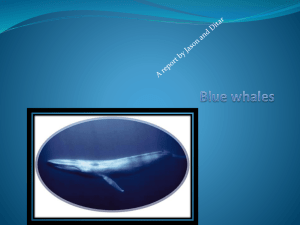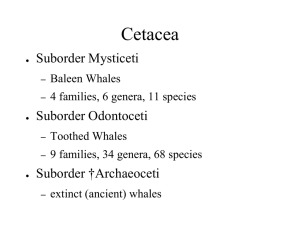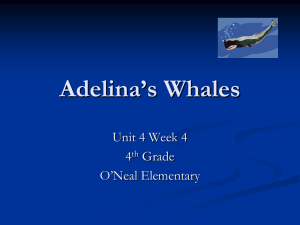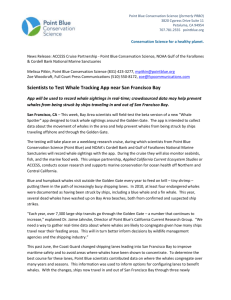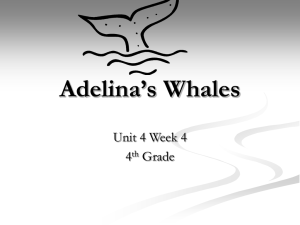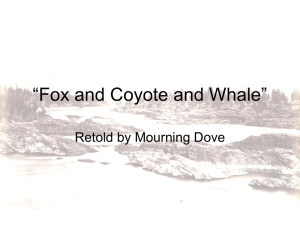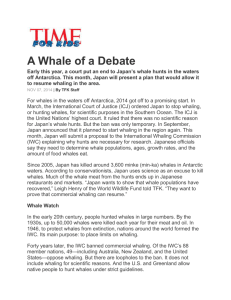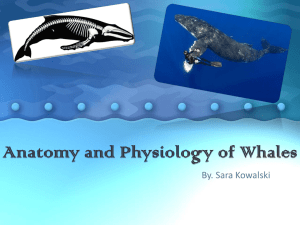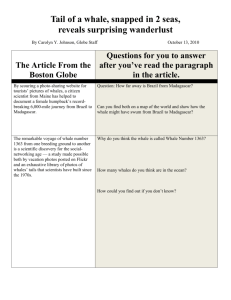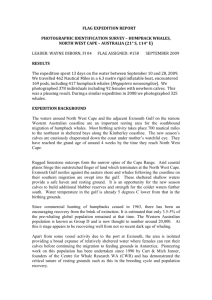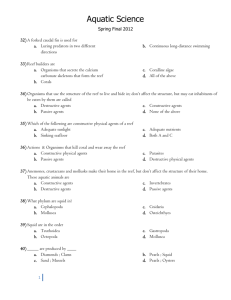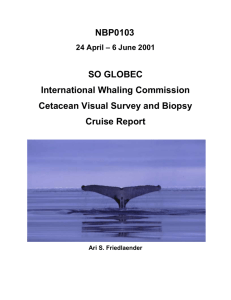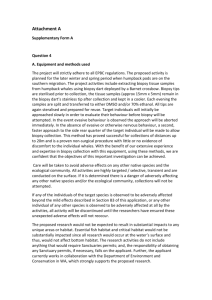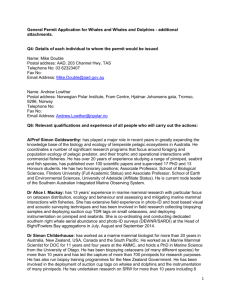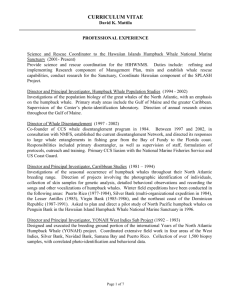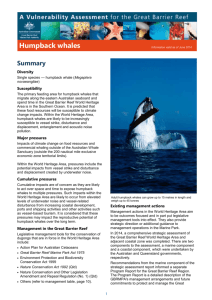Baleen whales in Virginia`s near
advertisement
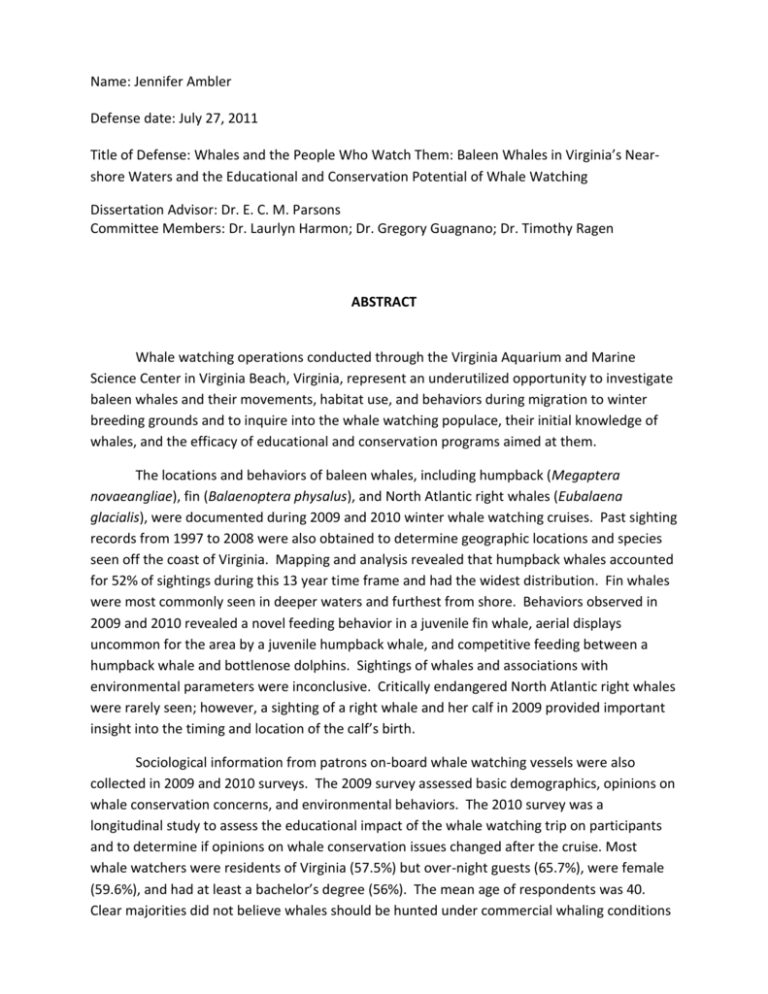
Name: Jennifer Ambler Defense date: July 27, 2011 Title of Defense: Whales and the People Who Watch Them: Baleen Whales in Virginia’s Nearshore Waters and the Educational and Conservation Potential of Whale Watching Dissertation Advisor: Dr. E. C. M. Parsons Committee Members: Dr. Laurlyn Harmon; Dr. Gregory Guagnano; Dr. Timothy Ragen ABSTRACT Whale watching operations conducted through the Virginia Aquarium and Marine Science Center in Virginia Beach, Virginia, represent an underutilized opportunity to investigate baleen whales and their movements, habitat use, and behaviors during migration to winter breeding grounds and to inquire into the whale watching populace, their initial knowledge of whales, and the efficacy of educational and conservation programs aimed at them. The locations and behaviors of baleen whales, including humpback (Megaptera novaeangliae), fin (Balaenoptera physalus), and North Atlantic right whales (Eubalaena glacialis), were documented during 2009 and 2010 winter whale watching cruises. Past sighting records from 1997 to 2008 were also obtained to determine geographic locations and species seen off the coast of Virginia. Mapping and analysis revealed that humpback whales accounted for 52% of sightings during this 13 year time frame and had the widest distribution. Fin whales were most commonly seen in deeper waters and furthest from shore. Behaviors observed in 2009 and 2010 revealed a novel feeding behavior in a juvenile fin whale, aerial displays uncommon for the area by a juvenile humpback whale, and competitive feeding between a humpback whale and bottlenose dolphins. Sightings of whales and associations with environmental parameters were inconclusive. Critically endangered North Atlantic right whales were rarely seen; however, a sighting of a right whale and her calf in 2009 provided important insight into the timing and location of the calf’s birth. Sociological information from patrons on-board whale watching vessels were also collected in 2009 and 2010 surveys. The 2009 survey assessed basic demographics, opinions on whale conservation concerns, and environmental behaviors. The 2010 survey was a longitudinal study to assess the educational impact of the whale watching trip on participants and to determine if opinions on whale conservation issues changed after the cruise. Most whale watchers were residents of Virginia (57.5%) but over-night guests (65.7%), were female (59.6%), and had at least a bachelor’s degree (56%). The mean age of respondents was 40. Clear majorities did not believe whales should be hunted under commercial whaling conditions (74.9%) or to remove whales to increase fish stocks (76.8%). Participants were more split in their opinions about hunting whales for subsistence and scientific purposes. The educational assessment revealed participants were able to recall facts learned on their whale watching trip up to three months after their cruise, but retention started to decline. Interest in learning more about whales declined three months after their cruise as well. In assessing opinions of threats to whales, participants rated whale watching as more of a threat after their cruise than before, signifying a new awareness of this activity disturbing whales. The 2010 Gulf of Mexico oil spill serendipitously occurred during the collection of post assessments, allowing for the measurement of changes in opinion about threats to whales between pre and post assessments. Oil spills were rated as less of a threat until the oil spill occurred. Results from the project reveal significant opportunities for continued research in both the ecological and sociological areas. The ecological study lays the foundation for future, more directed research on habitat use by baleen whales. The surveys of whale watchers show the impact human-wildlife and human-environment interactions have on passengers and provide insight into the development of enhanced educational programming and the need for revised conservation strategies.



